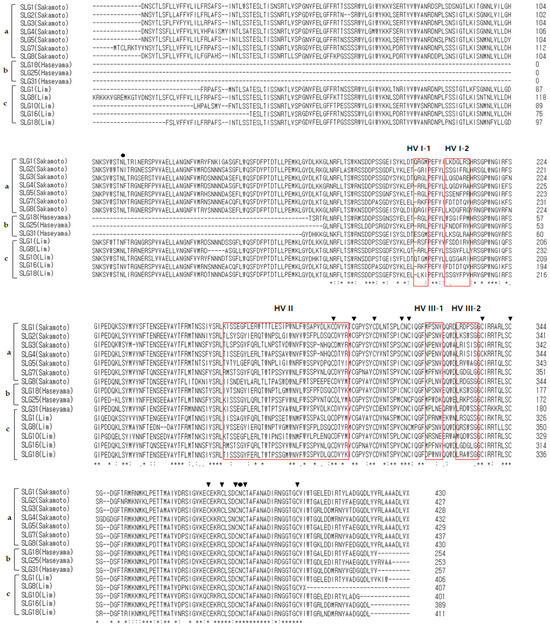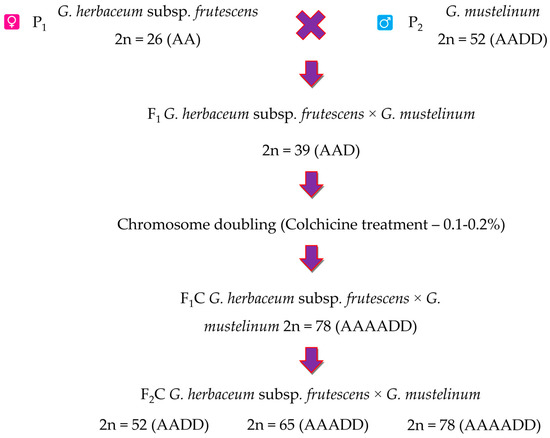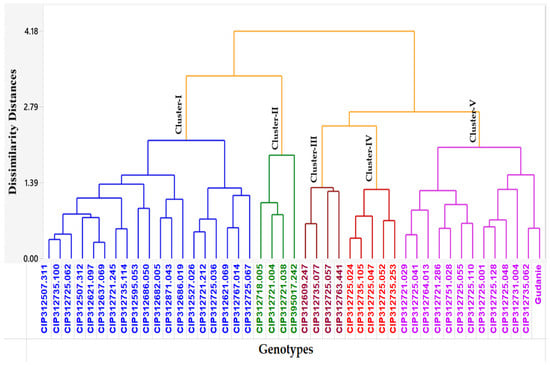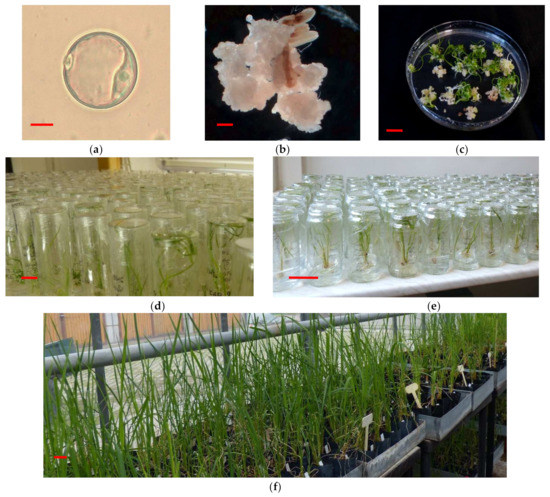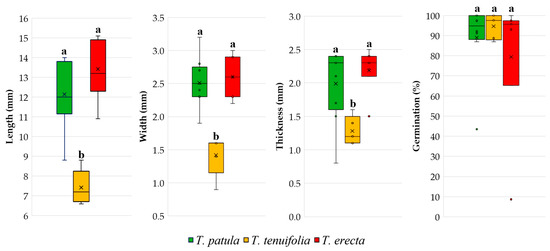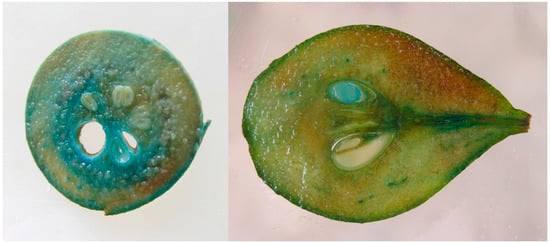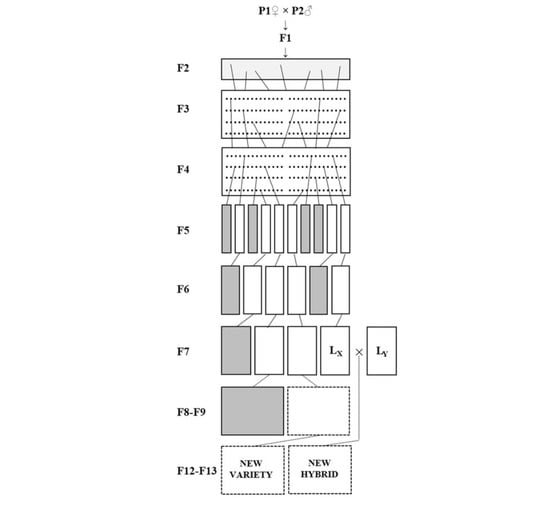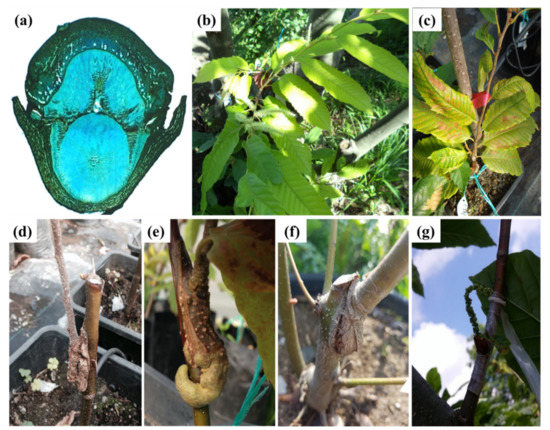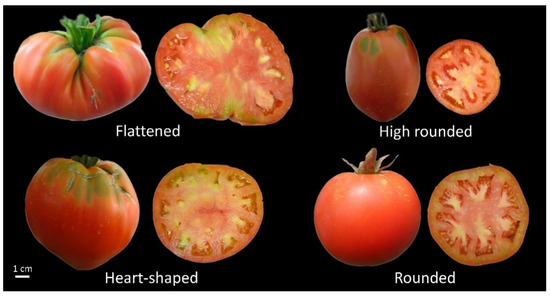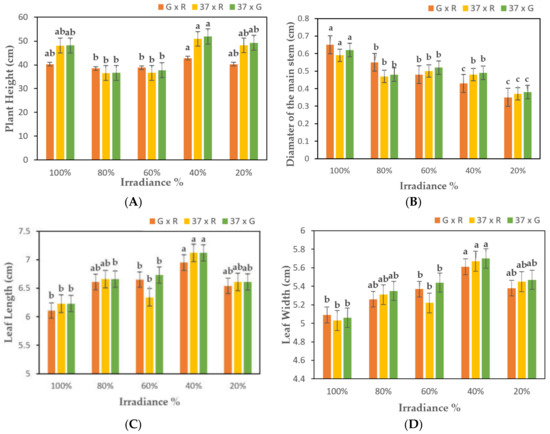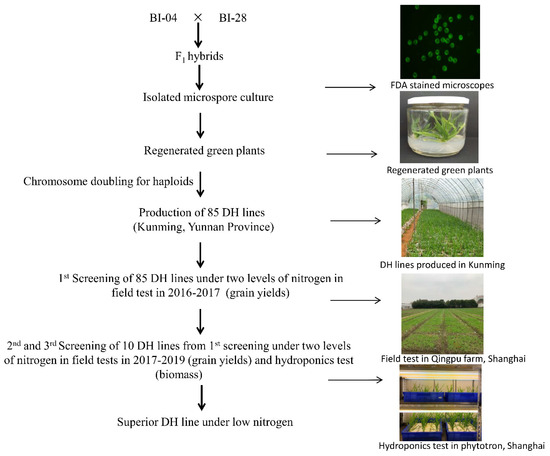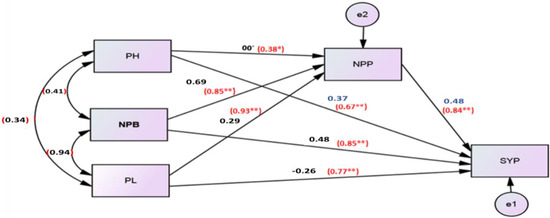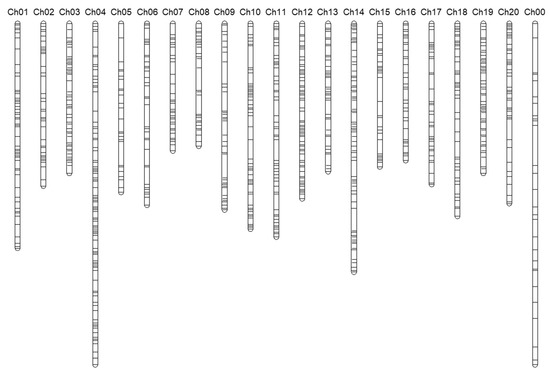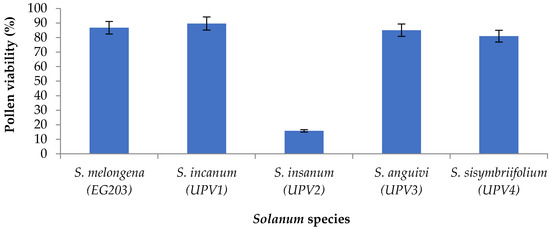Advances in Plant Breeding
Share This Topical Collection
Editors
 Prof. Dr. Radu E. Sestras
Prof. Dr. Radu E. Sestras
 Prof. Dr. Radu E. Sestras
Prof. Dr. Radu E. Sestras
E-Mail
Website
Collection Editor
Faculty of Horticulture, University of Agricultural Sciences and Veterinary Medicine, 3-5 Calea Manastur, 400372 Cluj-Napoca, Romania
Interests: genetics and plant breeding; sustainable agriculture; horticulture; forestry; biostatistics; biodiversity
Special Issues, Collections and Topics in MDPI journals
 Prof. Dr. Jaime Prohens
Prof. Dr. Jaime Prohens
 Prof. Dr. Jaime Prohens
Prof. Dr. Jaime Prohens
E-Mail
Website
Collection Editor
Institute for Conservation and Improvement of Valencian Agrodiversity, Universitat Politècnica de València, Camí de Vera 14, 46022 Valencia, Spain
Interests: genetic resources; breeding; genomics; crop wild relatives; landraces; gene banks; phenotyping
Special Issues, Collections and Topics in MDPI journals
 Prof. Dr. Adriana F. Sestras
Prof. Dr. Adriana F. Sestras
 Prof. Dr. Adriana F. Sestras
Prof. Dr. Adriana F. Sestras
E-Mail
Website
Collection Editor
Faculty of Horticulture, University of Agricultural Sciences and Veterinary Medicine of Cluj-Napoca, 400372 Cluj-Napoca, Romania
Interests: biodiversity; biostatistics; ecology; fruit quality; genetics and plant breeding; horticulture; trees
Special Issues, Collections and Topics in MDPI journals
 Prof. Dr. Mariola Plazas
Prof. Dr. Mariola Plazas
 Prof. Dr. Mariola Plazas
Prof. Dr. Mariola Plazas
E-Mail
Website
Collection Editor
Institute for Conservation and Improvement of Valencian Agrodiversity, Universitat Politècnica de València, Camí de Vera 14, 46022 Valencia, Spain
Interests: breeding for quality; abiotic stress breeding; genetic diversity; phenomics; introgression breeding
Special Issues, Collections and Topics in MDPI journals
Topical Collection Information
Dear Colleagues,
The efficient management of plant genetic resources, represented by the diversity of cultivated species but also by spontaneous flora that can provide genes of interest for resistance to abiotic and biotic stress, is of paramount importance for present and future agriculture and its sustainability. The broadening genetic bases of crop production and the need for a greater efficiency in the use of resources (energy, fertilizers, water, etc.) must be taken into account in the current conditions and for the development of sustainable agriculture and food systems. New improved cultivars are one of the most important factors in agricultural production, playing an essential role in ensuring a sustainable agriculture. This Special Issue aims to promote research on plant breeding, aimed at the topical problems of mankind: the continuous growth of the world’s population, which is already 7.8 billion; climate change and the action of multiple and various factors of abiotic stress; restriction in available land areas with favorable conditions for the cultivation of agricultural plants; impoverishment and the crisis of fresh water; desertification; salinization; aggressiveness and intensification of the attack of pathogens and harmful insects, or the appearance of new pathogens or strains of virulence; and the development of agricultural products with better quality. Along with classical breeding objectives and achievements, aimed at satisfying the current requirements of producers and farmers, traders, industry, market, and consumers or users, in this Special Issue we expect contributions about the use and application of innovative modern methodologies in plant breeding for the development of new crop varieties for current and future agriculture. This includes the development of varieties for suboptimal cultivation conditions to achieve sustainable agricultural production and increased food quality and security, but also to supply the raw materials for innovative industrial products and the living needs of mankind.
Prof. Dr. Radu E. Sestras
Prof. Dr. Jaime Prohens
Prof. Dr. Adriana F. Sestra
Dr. Mariola Plazas
Collection Editors
Manuscript Submission Information
Manuscripts should be submitted online at www.mdpi.com by registering and logging in to this website. Once you are registered, click here to go to the submission form. Manuscripts can be submitted until the deadline. All submissions that pass pre-check are peer-reviewed. Accepted papers will be published continuously in the journal (as soon as accepted) and will be listed together on the collection website. Research articles, review articles as well as short communications are invited. For planned papers, a title and short abstract (about 100 words) can be sent to the Editorial Office for announcement on this website.
Submitted manuscripts should not have been published previously, nor be under consideration for publication elsewhere (except conference proceedings papers). All manuscripts are thoroughly refereed through a single-blind peer-review process. A guide for authors and other relevant information for submission of manuscripts is available on the Instructions for Authors page. Plants is an international peer-reviewed open access semimonthly journal published by MDPI.
Please visit the Instructions for Authors page before submitting a manuscript.
The Article Processing Charge (APC) for publication in this open access journal is 2700 CHF (Swiss Francs).
Submitted papers should be well formatted and use good English. Authors may use MDPI's
English editing service prior to publication or during author revisions.
Keywords
- conventional plant breeding
- objectives and methods of plant breeding
- genetic resources in plant breeding
- abiotic and biotic stress traits
- breeding for quality
- achievements and perspectives in plant breeding
- broadening the genetic base of crops
- conservation and use of genetic resources
- gene background
- hybridization
- polyploidy
- mutations
- inbreeding and heterosis
- biotechnology and molecular tools in plant breeding
Published Papers (17 papers)
Open AccessArticle
Development of S Haplotype-Specific Markers to Identify Genotypes of Self-Incompatibility in Radish (Raphanus sativus L.)
by
Seong-Ho Heo, Su-Yeon Kim, Suk-Yeon Mo and Han-Yong Park
Viewed by 593
Abstract
Radish (
Raphanus sativus L.), a root vegetable belonging to the Brassicaceae family, is considered one of the representative crops displaying sporophytic self-incompatibility (SSI). The utilization of a self-incompatibility system in F
1 breeding can improve the efficiency of cross-combinations, leading to a
[...] Read more.
Radish (
Raphanus sativus L.), a root vegetable belonging to the Brassicaceae family, is considered one of the representative crops displaying sporophytic self-incompatibility (SSI). The utilization of a self-incompatibility system in F
1 breeding can improve the efficiency of cross-combinations, leading to a reduction in breeding time and aiding in the development of novel F
1 varieties. The successful implementation of this system necessitates the rapid and accurate identification of S haplotypes in parental lines. In this study, we identified a total of nine S haplotypes among 22 elite radish lines through Sanger sequencing. Subsequently, we obtained sequences for showing a 95% similarity to nine S haplotypes, along with sequences identified by other researchers using BLAST. Following this, multiple sequence alignment (MSA) was conducted to identify
SRK and
SLG sequence similarities, as well as polymorphisms within the class I and II groups. Subsequently, S haplotype-specific marker sets were developed, targeting polymorphic regions of
SRK and
SLG alleles. These markers successfully amplified each of the nine S haplotypes. These markers will play a crucial role in the rapid and precise identification of parental S haplotypes in the radish F
1 breeding process, proving instrumental in the radish F
1 purity test.
Full article
►▼
Show Figures
Open AccessArticle
Genomic and Cytogenetic Analysis of Synthetic Polyploids between Diploid and Tetraploid Cotton (Gossypium) Species
by
Mukhammad T. Khidirov, Dilrabo K. Ernazarova, Feruza U. Rafieva, Ziraatkhan A. Ernazarova, Abdulqahhor Kh. Toshpulatov, Ramziddin F. Umarov, Madina D. Kholova, Barno B. Oripova, Mukhlisa K. Kudratova, Bunyod M. Gapparov, Maftunakhan M. Khidirova, Doniyor J. Komilov, Ozod S. Turaev, Joshua A. Udall, John Z. Yu and Fakhriddin N. Kushanov
Viewed by 1107
Abstract
Cotton (
Gossypium spp.) is the most important natural fiber source in the world. The genetic potential of cotton can be successfully and efficiently exploited by identifying and solving the complex fundamental problems of systematics, evolution, and phylogeny, based on interspecific hybridization of
[...] Read more.
Cotton (
Gossypium spp.) is the most important natural fiber source in the world. The genetic potential of cotton can be successfully and efficiently exploited by identifying and solving the complex fundamental problems of systematics, evolution, and phylogeny, based on interspecific hybridization of cotton. This study describes the results of interspecific hybridization of
G. herbaceum L. (A
1-genome) and
G. mustelinum Miers ex Watt (AD
4-genome) species, obtaining fertile hybrids through synthetic polyploidization of otherwise sterile triploid forms with colchicine (C
22H
25NO
6) treatment. The fertile F
1C hybrids were produced from five different cross combinations: (1)
G. herbaceum subsp.
frutescens ×
G. mustelinum; (2)
G. herbaceum subsp.
pseudoarboreum ×
G. mustelinum; (3)
G. herbaceum subsp.
pseudoarboreum f.
harga ×
G. mustelinum; (4)
G. herbaceum subsp.
africanum ×
G. mustelinum; (5)
G. herbaceum subsp.
euherbaceum (variety A-833)
× G. mustelinum. Cytogenetic analysis discovered normal conjugation of bivalent chromosomes in addition to univalent, open, and closed ring-shaped quadrivalent chromosomes at the stage of metaphase I in the F
1C and F
2C hybrids. The setting of hybrid bolls obtained as a result of these crosses ranged from 13.8–92.2%, the fertility of seeds in hybrid bolls from 9.7–16.3%, and the pollen viability rates from 36.6–63.8%. Two transgressive plants with long fiber of 35.1–37.0 mm and one plant with extra-long fiber of 39.1–41.0 mm were identified in the F
2C progeny of
G. herbaceum subsp.
frutescens ×
G. mustelinum cross. Phylogenetic analysis with 72 SSR markers that detect genomic changes showed that tetraploid hybrids derived from the
G. herbaceum ×
G. mustelinum were closer to the species
G. mustelinum. The
G. herbaceum subsp.
frutescens was closer to the cultivated form, and its subsp.
africanum was closer to the wild form. New knowledge of the interspecific hybridization and synthetic polyploidization was developed for understanding the genetic mechanisms of the evolution of tetraploid cotton during speciation. The synthetic polyploids of cotton obtained in this study would provide beneficial genes for developing new cotton varieties of the
G. hirsutum species, with high-quality cotton fiber and strong tolerance to biotic or abiotic stress. In particular, the introduction of these polyploids to conventional and molecular breeding can serve as a bridge of transferring valuable genes related to high-quality fiber and stress tolerance from different cotton species to the new cultivars.
Full article
►▼
Show Figures
Open AccessArticle
Genetic Variability for Micronutrient Content and Tuber Yield Traits among Biofortified Potato (Solanum tuberosum L.) Clones in Ethiopia
by
Ebrahim Seid, Lemma Tessema, Tesfaye Abebe, Atsede Solomon, Abebe Chindi, Betaw Hirut, Kasaye Negash, Egata Shunka, Zewditu Mogse, Gabriela Burgos and Thiago Mendes
Cited by 3 | Viewed by 1068
Abstract
Malnutrition is one of the global issues of public health concern, and iron and zinc deficiencies are at the top of the list. Iron deficiency affects more than 2 billion people in the world and is a major cause of anemia. Potato has
[...] Read more.
Malnutrition is one of the global issues of public health concern, and iron and zinc deficiencies are at the top of the list. Iron deficiency affects more than 2 billion people in the world and is a major cause of anemia. Potato has the potential to be an important source of iron and zinc. This study assessed the nature and magnitude of genetic variability in Fe and Zn concentrations, tuber yield, and quality traits among biofortified tetraploid potato clones and their relationships through correlation and path analysis. A total of 45 potato genotypes, including the variety Gudanie, were grown in field trials in a 9 × 5 alpha lattice design with three replications. Significant differences in mineral, tuber quality, and yield traits were observed among the genotypes, and high broad-sense heritability was obtained for most traits, suggesting that progress through breeding can be achieved. However, negative correlations and direct effects on most of the traits with Fe and Zn contents are found both at genotypic and phenotypic levels. Therefore, attaining simultaneous genetic gain for yield and enhanced Fe and Zn concentrations will be challenging. Cluster analysis assembled them into five groups. Cluster II contained the most prominent genotypes, having better mean values compared to all other genotypes for micronutrient traits, viz., Fe (23.80 mg kg
−1) and Zn (17.07 mg kg
−1). The results of this study confirm the presence of sufficient genetic variation for iron and zinc mineral concentration and the possibility to make significant progress through breeding.
Full article
►▼
Show Figures
Open AccessReview
Designing Novel Strategies for Improving Old Legumes: An Overview from Common Vetch
by
Elena Ramírez-Parra and Lucía De la Rosa
Cited by 2 | Viewed by 1975
Abstract
Common vetch (
Vicia sativa L.) is a grain legume used in animal feeding, rich in protein content, fatty acid, and mineral composition that makes for a very adequate component to enrich feedstuff. In addition, relevant pharmacological properties have been reported in humans.
[...] Read more.
Common vetch (
Vicia sativa L.) is a grain legume used in animal feeding, rich in protein content, fatty acid, and mineral composition that makes for a very adequate component to enrich feedstuff. In addition, relevant pharmacological properties have been reported in humans. The common vetch, similar to other legumes, can fix atmospheric nitrogen, a crucial feature for sustainable agricultural systems. These properties enhance the use of vetch as a cover crop and its sowing in intercropping systems. Moreover, several studies have recently pointed out the potential of vetch in the phytoremediation of contaminated soils. These characteristics make vetch a relevant crop, which different potential improvements target. Varieties with different yields, flowering times, shattering resistance, nutritional composition, rhizobacteria associations, drought tolerance, nitrogen fixation capacity, and other agronomic-relevant traits have been identified when different vetch accessions are compared. Recently, the analysis of genomic and transcriptomic data has allowed the development of different molecular markers to be used for assisted breeding purposes, promoting crop improvement. Here, we review the potential of using the variability of
V. sativa genetic resources and new biotechnological and molecular tools for selecting varieties with improved traits to be used in sustainable agriculture systems.
Full article
►▼
Show Figures
Open AccessEditor’s ChoiceArticle
Improvement of Anther Culture to integrate Doubled Haploid Technology in Temperate Rice (Oryza sativa L.) Breeding
by
Csaba Lantos, Mihály Jancsó, Árpád Székely, Éva Nagy, Tímea Szalóki and János Pauk
Cited by 7 | Viewed by 1953
Abstract
Doubled haploid (DH) plant production, such as anther culture (AC), is an effective tool used in modern rice breeding programs. The improved efficient protocols applied can shorten the process of breeding. The effect of combinations of plant growth regulators (2.5 mg/L NAA, 1
[...] Read more.
Doubled haploid (DH) plant production, such as anther culture (AC), is an effective tool used in modern rice breeding programs. The improved efficient protocols applied can shorten the process of breeding. The effect of combinations of plant growth regulators (2.5 mg/L NAA, 1 mg/L 2,4-D and 0.5 mg/L kinetin; 2 mg/L 2,4-D and 0.5 mg/L BAP) in the induction medium were compared in AC for five rice breeding materials and combinations. Induction of calli ranged from 264.6 ± 67.07 to 468.8 ± 123.2 calli/100 anthers in AC of rice genotypes. Two basal media (MS and N
6) and two combinations of growth regulators (1 mg/L NAA, 1 mg/L BAP and 1 mg/L kinetin; 1.5 mg/L BAP, 0.5 mg/L NAA and 0.5 mg/L kinetin) were used as regeneration media. The in vitro green plant production was the highest with the application of the N
6NDK induction medium (NAA, 2,4-D and kinetin) and the MS-based regeneration medium (1 mg/L NAA, 1 mg/BAP and 1 mg/L kinetin) in anther culture of the ‘1009’ genotype (95.2 green plantlets/100 anthers). The mean of five genotypes was 24.48 green plantlets/100 anthers for the best treatment. Flow cytometric analyses conducted identified the microspore origin of the haploid calli produced in AC, while the uniformity of spontaneous DH plants was checked in the DH
1 and DH
2 generations. Spontaneous chromosome doubling ranged from 38.1% to 57.9% (mean 42.1%), depending on the breeding source. The generated and selected DH lines were tested in micro- and small-plot field experiments to identify promising lines for a pedigree breeding program. The improved AC method was integrated in a Hungarian temperate rice pedigree breeding program.
Full article
►▼
Show Figures
Open AccessArticle
A Tomato EMS-Mutagenized Population Provides New Valuable Resources for Gene Discovery and Breeding of Developmental Traits
by
Rocío Fonseca, Carmen Capel, Roberto Nieto-Canseco, Ana Ortiz-Atienza, Sandra Bretones, Juan D. López-Fábregas, Abraham S. Quevedo-Colmena, Ricardo Lebrón, Teresa Barragán-Lozano, Víctor Villalobos-Ramírez, Fernando J. Yuste-Lisbona, Trinidad Angosto, Juan Capel and Rafael Lozano
Cited by 4 | Viewed by 2210
Abstract
Tomato (
Solanum lycopersicum L.) is a major horticultural crop and a model species among eudicots, especially for traits related to reproductive development. Although considerable progress has been made since the tomato genome sequence project was completed, most of the genes identified remain
[...] Read more.
Tomato (
Solanum lycopersicum L.) is a major horticultural crop and a model species among eudicots, especially for traits related to reproductive development. Although considerable progress has been made since the tomato genome sequence project was completed, most of the genes identified remain predictions with an unknown or hypothetical function. This lack of functional characterization hampers the use of the huge amount of genomic information available to improve the quality and productivity of this crop. Reverse genetics strategies such as artificial mutagenesis and next-generation sequencing approaches build the perfect tandem for increasing knowledge on functional annotation of tomato genes. This work reports the phenotypic characterization of a tomato mutant collection generated from an EMS chemical mutagenesis program aimed to identify interesting agronomic mutants and novel gene functions. Tomato mutants were grouped into fourteen phenotypic classes, including vegetative and reproductive development traits, and the inheritance pattern of the identified mutations was studied. In addition, causal mutation of a selected mutant line was isolated through a mapping-by-sequencing approach as a proof of concept of this strategy’s successful implementation. Results support tomato mutagenesis as an essential tool for functional genomics in this fleshy-fruited model species and a highly valuable resource for future breeding programs of this crop species aimed at the development of more productive and resilient new varieties under challenging climatic and production scenarios.
Full article
►▼
Show Figures
Open AccessArticle
Biological Traits and Genetic Relationships Amongst Cultivars of Three Species of Tagetes (Asteraceae)
by
Raluca Cicevan, Adriana F. Sestras, Mariola Plazas, Monica Boscaiu, Santiago Vilanova, Pietro Gramazio, Oscar Vicente, Jaime Prohens and Radu E. Sestras
Cited by 6 | Viewed by 3566
Abstract
Marigolds (
Tagetes spp.) are multifunctional flowering plants belonging to the Asteraceae family, well-known and widespread for their ornamental value and many other uses. In this study, morphological differences and genetic relationships among 21 cultivars of three species of marigold (
Tagetes patula
[...] Read more.
Marigolds (
Tagetes spp.) are multifunctional flowering plants belonging to the Asteraceae family, well-known and widespread for their ornamental value and many other uses. In this study, morphological differences and genetic relationships among 21 cultivars of three species of marigold (
Tagetes patula,
T. erecta and
T. tenuifolia) were analysed. Results have revealed obvious differences among genotypes, starting from the morphological characteristics of the seeds and their capacity to germinate to adult plant morphological characteristics, both between cultivars and species. The genotypic differences were manifested in considerable variation in the development of phenological stages and the main morphological traits of plants and flowers. PCA and hierarchical clustering analyses of morphological traits revealed a homogeneous grouping of cultivars within each species, except for Orion, belonging to
T. patula, which was closer to
T. erecta cultivars. A subset of 13 cultivars from the three species was subjected to SSR analysis, revealing considerable genetic diversity and good separation between
T. patula on the one side and
T. erecta and
T. tenuifolia on the other. The observed heterozygosity was much lower than the expected heterozygosity, revealing a high degree of fixation. The results reveal that the three species evaluated have considerable morphological and genetic diversity, which has important implications for assessing genetic diversity, conserving germplasm and selecting parents for new breeding works in marigolds.
Full article
►▼
Show Figures
Open AccessArticle
Stability of Transgene Inheritance in Progeny of Field-Grown Pear Trees over a 7-Year Period
by
Vadim Lebedev
Cited by 3 | Viewed by 1982
Abstract
Breeding woody plants is a very time-consuming process, and genetic engineering tools have been used to shorten the juvenile phase. In addition, transgenic trees for commercial cultivation can also be used in classical breeding, but the segregation of transgenes in the progeny of
[...] Read more.
Breeding woody plants is a very time-consuming process, and genetic engineering tools have been used to shorten the juvenile phase. In addition, transgenic trees for commercial cultivation can also be used in classical breeding, but the segregation of transgenes in the progeny of perennial plants, as well as the possible appearance of unintended changes, have been poorly investigated. We studied the inheritance of the
uidA gene in the progeny of field-grown transgenic pear trees for 7 years and the physical and physiological parameters of transgenic seeds. A total of 13 transgenic lines were analyzed, and the
uidA gene segregated 1:1 in the progeny of 9 lines and 3:1 in the progeny of 4 lines, which is consistent with Mendelian inheritance for one and two transgene loci, respectively. Rare and random deviations from the Mendelian ratio were observed only for lines with one locus. Transgenic seeds’ mass, size, and shape varied slightly, despite significant fluctuations in weather conditions during cultivation. Expression of the
uidA gene in the progeny was stable. Our study showed that the transgene inheritance in the progeny of pear trees under field conditions occurs according to Mendelian ratio, does not depend on the environment, and the seed vigor of transgenic seeds does not change.
Full article
►▼
Show Figures
Open AccessEditor’s ChoiceArticle
Physico-Chemical, Nutritional, and Sensory Evaluation of Two New Commercial Tomato Hybrids and Their Parental Lines
by
Zoltán Felföldi, Floricuta Ranga, Sonia Ancuta Socaci, Anca Farcas, Mariola Plazas, Adriana F. Sestras, Dan Cristian Vodnar, Jaime Prohens and Radu E. Sestras
Cited by 11 | Viewed by 2810
Abstract
Tomato (
Solanum lycopersicum) is the globally most consumed vegetable. The objective of this research was to analyze physico-chemical, nutritional and sensorial components (taste and flavor) in two new commercial hybrids (AS 300 F1 and AS 400 F1) and their four F7
[...] Read more.
Tomato (
Solanum lycopersicum) is the globally most consumed vegetable. The objective of this research was to analyze physico-chemical, nutritional and sensorial components (taste and flavor) in two new commercial hybrids (AS 300 F1 and AS 400 F1) and their four F7 parental lines. Two widely grown F1 hybrids (Precos F1 and Addalyn F1) were used as controls. The results obtained for carbohydrates (HPLC-RID) indicated that the highest values (27.82 mg/g) were recorded in the paternal line AS 10 of the new hybrid AS 400 F1. The highest values of total organic acids (HPLC-VWD) were recorded in Addalyn F1 (5.06 m/g), while the highest value of phenolic compounds (HPLC-DAD-ESI⁺) were identified in the maternal line AS 09 of the hybrid AS 400 F1 (96.3 µg/g). Intrinsic sensory values were analyzed by male and female tasters of different ages using a hedonic scale. The tasters’ perception revealed obvious taste differences between tomato genotypes. The study allowed determining genetic parameters of interest (heterosis and heterobeltosis) for the new hybrids, as well as a detailed characterization of the chemical composition and organoleptic quality of the parental breeding lines and their hybrids, which is useful in tomato breeding.
Full article
►▼
Show Figures
Open AccessReview
Advances in Rootstock Breeding of Nut Trees: Objectives and Strategies
by
Kourosh Vahdati, Saadat Sarikhani, Mohammad Mehdi Arab, Charles A. Leslie, Abhaya M. Dandekar, Neus Aletà, Beatriz Bielsa, Thomas M. Gradziel, Álvaro Montesinos, María José Rubio-Cabetas, Gina M. Sideli, Ümit Serdar, Burak Akyüz, Gabriele Loris Beccaro, Dario Donno, Mercè Rovira, Louise Ferguson, Mohammad Akbari, Abdollatif Sheikhi, Adriana F. Sestras, Salih Kafkas, Aibibula Paizila, Mahmoud Reza Roozban, Amandeep Kaur, Srijana Panta, Lu Zhang, Radu E. Sestras and Shawn A. Mehlenbacheradd
Show full author list
remove
Hide full author list
| Viewed by 6709
Abstract
The production and consumption of nuts are increasing in the world due to strong economic returns and the nutritional value of their products. With the increasing role and importance given to nuts (i.e., walnuts, hazelnut, pistachio, pecan, almond) in a balanced and healthy
[...] Read more.
The production and consumption of nuts are increasing in the world due to strong economic returns and the nutritional value of their products. With the increasing role and importance given to nuts (i.e., walnuts, hazelnut, pistachio, pecan, almond) in a balanced and healthy diet and their benefits to human health, breeding of the nuts species has also been stepped up. Most recent fruit breeding programs have focused on scion genetic improvement. However, the use of locally adapted grafted rootstocks also enhanced the productivity and quality of tree fruit crops. Grafting is an ancient horticultural practice used in nut crops to manipulate scion phenotype and productivity and overcome biotic and abiotic stresses. There are complex rootstock breeding objectives and physiological and molecular aspects of rootstock–scion interactions in nut crops. In this review, we provide an overview of these, considering the mechanisms involved in nutrient and water uptake, regulation of phytohormones, and rootstock influences on the scion molecular processes, including long-distance gene silencing and trans-grafting. Understanding the mechanisms resulting from rootstock × scion × environmental interactions will contribute to developing new rootstocks with resilience in the face of climate change, but also of the multitude of diseases and pests.
Full article
►▼
Show Figures
Open AccessArticle
Morphological Diversity, Genetic Characterization, and Phytochemical Assessment of the Cypriot Tomato Germplasm
by
Filio Athinodorou, Petros Foukas, Georgios Tsaniklidis, Anastasios Kotsiras, Antonios Chrysargyris, Costas Delis, Angelos C. Kyratzis, Nikolaos Tzortzakis and Nikolaos Nikoloudakis
Cited by 17 | Viewed by 4493
Abstract
Tomato (
Solanum lycopersicum L.) is considered one of the most valuable and versatile vegetable crops globally and also serves as a significant model species for fruit developmental biology. Despite its significance, a severe genetic bottleneck and intense selection of genotypes with specific
[...] Read more.
Tomato (
Solanum lycopersicum L.) is considered one of the most valuable and versatile vegetable crops globally and also serves as a significant model species for fruit developmental biology. Despite its significance, a severe genetic bottleneck and intense selection of genotypes with specific qualitative traits have resulted in the prevalence of a restricted number of (geno)types, also causing a lack of diversity across widespread cultivated types. As a result, the re-emergence of landraces as well as traditional and heirloom varieties is largely acknowledged as a countermeasure to restore phenotypic, phytochemical and genetic diversity while enriching the aroma/taste tomato palette. On those grounds, the Cypriot tomato germplasm was assessed and characterized. Ten landrace accessions were evaluated under greenhouse conditions and data were collected for 24 IPGRI discrete phenotypic traits. Grouping of accessions largely reflected the fruit shape and size; four different fruit types were recorded across accessions (flattened, heart-shaped, rounded and highly rounded). Moreover, a single run panel consisting of ten SSRs was developed and applied in order to genetically characterize 190 Cypriot genotypes and foreign heirloom varieties. Based on genetic indexes it was established that tomato landraces have a rather low level of heterogeneity and genetic variation. Finally, mineral and phytochemical analyses were conducted in order to estimate biochemical attributes (total phenolics, ascorbic acid, lycopene,
β-carotene, total soluble content, titratable acidity) across genotypes; thus, ascertaining that the Cypriot panel has a high nutritional value. Due to the thermo-drought adaptation and tolerance of these genotypes, the current study serves as a roadmap for future breeding efforts in order to incorporate desirable traits or develop novel tomato lines combining resilience and alimentary value.
Full article
►▼
Show Figures
Open AccessArticle
Phenotypic Characterization and RT-qPCR Analysis of Flower Development in F1 Transgenics of Chrysanthemum × grandiflorum
by
Saba Haider, Muhammad Ajmal Bashir, Umer Habib, Yike Gao, Muhammad Rashid Shaheen, Rashid Hussain and Fan Min
Cited by 1 | Viewed by 2743
Abstract
Gene silencing is the epigenetic regulation of any gene in order to prevent gene expression at the transcription or translation levels. Among various gene silencing techniques, RNA silencing (RNAi) is notable gene regulation technique that involves sequence-specific targeting and RNA degradation. However, the
[...] Read more.
Gene silencing is the epigenetic regulation of any gene in order to prevent gene expression at the transcription or translation levels. Among various gene silencing techniques, RNA silencing (RNAi) is notable gene regulation technique that involves sequence-specific targeting and RNA degradation. However, the effectiveness of transgene-induced RNAi in F
1 generation of chrysanthemum has not been studied yet. In the current study, we used RNAi-constructed
CmTFL1 (white-flowered) and
CmSVP overexpressed (yellow flowered) transgenic plants of previously conducted two studies for our experiment. Cross hybridization was performed between these intergeneric transgenic and non-transgenic plants of the winter-growing chrysanthemum selection “37” (light pink flowered). The transgene
CmSVP was confirmed in F
1 hybrids by RT-PCR analysis, whereas hybrids of
CmTFL1 parental plants were non-transgenic. Besides this, quantitative real-time PCR (qPCR) was used to explain the molecular mechanism of flower development using reference genes. Intergeneric and interspecific hybrids produced different colored flowers unlike their respective parents. These results suggest that generic traits of
CmSVP overexpressed plants can be transferred into F
1 generations when crossed with mutant plants. This study will aid in understanding the breeding phenomenon among intergeneric hybrids of chrysanthemum plants at an in vivo level, and such transgenics will also be more suitable for sustainable flower yield under a low-light production system.
Full article
►▼
Show Figures
Open AccessArticle
Rapid Generation and Analysis of a Barley Doubled Haploid Line with Higher Nitrogen Use Efficiency Than Parental Lines by F1 Microspore Embryogenesis
by
Hongwei Xu, Yingbo Li, Runhong Gao, Rugen Xu, Guimei Guo, Ruiju Lu, Nigel G. Halford, Zhiwei Chen and Chenghong Liu
Cited by 4 | Viewed by 2386
Abstract
Creating varieties with high nitrogen use efficiency (NUE) is crucial for sustainable agriculture development. In this study, a superior barley doubled haploid line (named DH45) with improved NUE was produced via F
1 microspore embryogenesis with three rounds of screening in different nitrogen
[...] Read more.
Creating varieties with high nitrogen use efficiency (NUE) is crucial for sustainable agriculture development. In this study, a superior barley doubled haploid line (named DH45) with improved NUE was produced via F
1 microspore embryogenesis with three rounds of screening in different nitrogen levels by hydroponic and field experiments. The molecular mechanisms responsible for the NUE of DH45 surpassing that of its parents were investigated by RNA-seq analysis. A total of 1027 differentially expressed genes (DEGs) were identified that were up- or down-regulated in DH45 under low nitrogen conditions but showed no significant differences in the parents. GO analysis indicated that genes involved in nitrogen compound metabolic processes were significantly enriched in DH45 compared with the parents. KEGG analysis showed the MAPK signaling pathway plant to be highly enriched in DH45 relative to its parents, as well as genes involved in alanine, aspartate and glutamate metabolism, and arginine biosynthesis. In conclusion, our study revealed the potential to fix trait superiority in a line by combining crossing with F
1 microspore culture technologies in future crop breeding and also identified several candidate genes that are expressed in shoots and may enable barley to cope with low-nitrogen stress.
Full article
►▼
Show Figures
Open AccessArticle
Effect of Three Types of Ion Beam Irradiation on Gerbera (Gerbera hybrida) In Vitro Shoots with Mutagenesis Efficiency
by
Tomoya Hosoguchi, Yuna Uchiyama, Hinata Komazawa, Masaki Yahata, Takashi Shimokawa and Akiyoshi Tominaga
Cited by 4 | Viewed by 4069
Abstract
Gerbera in vitro shoots were irradiated using three types of ion beams with different line energy transfers (LETs) to investigate the effective LET and absorbed doses for mutagenesis. Furthermore, genomic mutation analyses were conducted on the obtained mutants. Survival rate analysis showed a
[...] Read more.
Gerbera in vitro shoots were irradiated using three types of ion beams with different line energy transfers (LETs) to investigate the effective LET and absorbed doses for mutagenesis. Furthermore, genomic mutation analyses were conducted on the obtained mutants. Survival rate analysis showed a lower lethal dose 50% (LD
50) with ion beams with higher LETs. Trait/morphological mutations exhibited changes in the color and shape of petals and male sterility. Irradiation conditions with the highest growth change and trait/morphological mutation rates in each ion were C irradiation at 10 Gy, Ar irradiation at 5 Gy, and Fe irradiation at 5 Gy, with a range of absorbed dose of around LD
50 to about 10 Gy lower. The highest trait/morphological mutation rate was 14.1% with Ar irradiation at 5 Gy, which was one of the criteria for ion beam irradiation of gerbera in vitro shoots. Furthermore, the genomic mutation in the flower color, petal shape, and male sterile mutants were confirmed by genotype analysis using Genotyping by Random Amplicon Sequencing-Direct technology. This is the first study to report the efficient production of gerbera mutants that could be analyzed. Our findings may lead to more efficient gerbera mutant production and analysis technology.
Full article
►▼
Show Figures
Open AccessArticle
Morphological Formation, Fatty Acid Profile, and Molecular Identification of Some Landraces of Ethiopian Brassica as a Promising Crop to Support Breeding Programs
by
Ahmed E. A. Khalaf, Samia A. Abd Al-Aziz, Safaa M. Ali, Adel A. Mohdaly, Mostafa M. Rady, Ali Majrashi, Esmat F. Ali and Ahmed A. M. Yassein
Viewed by 2028
Abstract
There has been an increased interest in oilseed crops for agro-industry research and development breeding programs to secure sustainable food and agriculture. The introgression of exotic genotypes of oilseed Brassica into cultivated relatives is inevitable in the genetic improvement of oilseed crops. This
[...] Read more.
There has been an increased interest in oilseed crops for agro-industry research and development breeding programs to secure sustainable food and agriculture. The introgression of exotic genotypes of oilseed Brassica into cultivated relatives is inevitable in the genetic improvement of oilseed crops. This experimental attempt aimed to characterize the morphological and molecular basis for the identification and characterization of some Brassica genotypes. Fatty acid profile, yield, and morphology are under genetic control and can be used to identify genotypes. Characterization and identification were fulfilled for five accessions from
Brassica spp. Plant height, height of first branch, number of branches and pods per plant, seed yield per plant, average pod length, number of seeds per pod, protein and oil contents (%), and fatty acid profile were examined. Besides, the relationship between seed yield and seed yield-contributing characteristics was estimated, as well as the phylogenetic relationship of the internal transcribed spacer (ITS). The genotypes varied significantly for all examined traits, taking into account the most important traits: seed yield per plant and oil content. For example, oil content in the samples ranged between 41.1 and 49.3%. Path analysis results showed a high and positive direct effect between each number of primary branches and the number of pods per plant with seed yield per plant (0.48). The morphological and molecular observations suggest that the Fay1, Fay3, Fay4, and Fay6 accessions belong to
Brassica rapa, while Fay2 belongs to
Brassica carinata. It can be concluded based on the present findings that the Fay3 genotype with the highest oil content and the lowest erucic acid content compared to the other genotypes can be proposed as a potential donor for future breeding programs for oil production and quality, while Fay1 can be utilized as donor to increase the seed yield per plant.
Full article
►▼
Show Figures
Open AccessArticle
Population Structure and Genetic Diversity of Cucurbita moschata Based on Genome-Wide High-Quality SNPs
by
Hea-Young Lee, Siyoung Jang, Chea-Rin Yu, Byoung-Cheorl Kang, Joong-Hyoun Chin and Kihwan Song
Cited by 14 | Viewed by 3090
Abstract
Pumpkins (
Cucurbita moschata) are one of the most important economic crops in genus
Cucurbita worldwide. They are a popular food resource and an important rootstock resource for various Cucurbitaceae. Especially,
C. moschata is widely used as a rootstock for the commercial
[...] Read more.
Pumpkins (
Cucurbita moschata) are one of the most important economic crops in genus
Cucurbita worldwide. They are a popular food resource and an important rootstock resource for various Cucurbitaceae. Especially,
C. moschata is widely used as a rootstock for the commercial production of bloomless cucumbers in East Asia. Since the genetic diversity of the commercial rootstock varieties is narrow, there has been an increasing demand for the trait development of abiotic and biotic stress tolerance breeding. In this study, 2071 high-quality SNPs that were distributed evenly across 20 chromosomes of pumpkins were discovered through the genotyping-by-sequencing (GBS) analysis of 610 accessions of
C. moschata germplasm with a global origin. Using these SNPs, various analyses of the genetic diversity and the population structure were performed. Three subgroups were clustered from the germplasm collection, which included East Asia, Africa, and America, and these areas were included the most in each subgroup. Among those groups, accessions from Africa and South Asia showed the highest genetic diversity, which was followed by the Mexico accessions. This result reflected that large gene pools that consist of various native landraces have been conserved in those of countries. Based on the genetic diversity, we finally constructed the
C. moschata core collection, which included 67 representative accessions from the 610 germplasms. Five morphological traits that are important in commercial grafting and rootstock seed production, which include the cotyledon length, the cotyledon width, the hypocotyl length, the internode length, and the number of female flowers, were investigated for three years and used to confirm the validity of the core collection selection. The results are expected to provide valuable information about the genetic structure of the worldwide
C. moschata germplasm and help to create new gene pools to develop genetically diverse rootstock breeding materials.
Full article
►▼
Show Figures
Open AccessArticle
Development of Interspecific Hybrids between a Cultivated Eggplant Resistant to Bacterial Wilt (Ralstonia solanacearum) and Eggplant Wild Relatives for the Development of Rootstocks
by
Mohamed Rakha, Ahmed Namisy, Jaw-Rong Chen, Mohammed E. El-Mahrouk, Elmahdy Metwally, Naglaa Taha, Jaime Prohens, Mariola Plazas and Dalia Taher
Cited by 15 | Viewed by 3694
Abstract
Bacterial wilt caused by
Ralstonia solanacerum is one of the most economically and destructive eggplant diseases in many tropical and subtropical areas of the world. The objectives of this study were to develop interspecific hybrids, as potential rootstocks, between the eggplant (
Solanum
[...] Read more.
Bacterial wilt caused by
Ralstonia solanacerum is one of the most economically and destructive eggplant diseases in many tropical and subtropical areas of the world. The objectives of this study were to develop interspecific hybrids, as potential rootstocks, between the eggplant (
Solanum melongena) bacterial wilt resistant line EG203 and four wild accessions (
S. incanum UPV1,
S. insanum UPV2,
S.anguivi UPV3, and
S. sisymbriifolium UPV4), and to evaluate interspecific hybrids along with parents for resistance to bacterial wilt strains Pss97 and Pss2016. EG203 was crossed successfully with wild accessions UPV2 and UPV3 and produced viable seeds that germinated when wild accessions were used as a maternal parent in the crosses. In addition, viable interspecific hybrids between EG203 and UPV1 were obtained in both directions of the hybridization, although embryo rescue had to be used. Hybridity was confirmed in the four developed interspecific hybrid combinations with three SSR markers. EG203 was resistant to both strains Pss97 and Pss2016, while UPV1 and UPV3 were, respectively, resistant and moderately resistant to Pss2016. The four interspecific hybrids with UPV2, UPV3, and UPV1 were susceptible to both bacterial wilt strains, indicating that the resistance of EG203, UPV1, and UPV3 behaves as recessive in interspecific crosses. However, given the vigor of interspecific hybrids between eggplant and the three cultivated wild species, these hybrids may be of interest as rootstocks. However, the development of interspecific hybrid rootstocks resistant to bacterial wilt will probably require the identification of new sources of dominant resistance to this pathogen in the eggplant wild relatives.
Full article
►▼
Show Figures
Planned Papers
The below list represents only planned manuscripts. Some of these
manuscripts have not been received by the Editorial Office yet. Papers
submitted to MDPI journals are subject to peer-review.
Title: Designing novel strategies for improving old crops: A Vicia sativa review
Authors: Elena Ramírez-Parra & Lucía De la Rosa
Affiliation: INIA/CSIC Instituto Nacional de Investigación y Tecnología Agraria y Alimentaria, Consejo Superior de Investigaciones Científicas
Abstract: Common vetch (Vicia sativa L.) is a grain legume with dual use in animal feeding, as fodder and feed. Its rich protein content, and fatty acid and mineral composition make common vetch a very adequate food to nutritionally enrich feedstuff. In addition, relevant pharmacological properties have been reported in humans. The common vetch, like the rest of the legumes, can fix atmospheric nitrogen, an important feature that enhances sustainable agriculture systems. These properties enhance the use of vetch as a cover crop and its sowing in intercropping systems. Moreover, several studies have recently pointed out the potential of this crop in the phytoremediation of soils contaminated with heavy metals, salt, or organic pollutants.
These characteristics make vetch a relevant crop in which there are different potential improvement strategies. Varieties with different yields, flowering times, shattering resistance, rhizobacteria associations, drought tolerance, nitrogen fixation capacity, and other agronomic-relevant traits have also been identified and also variations in nutritional and antinutritional factors composition are observed when different vetch accessions are compared. These data show the potential of using the variability of V. sativa genetic resources from genebanks for selecting varieties with improved traits. In the last five years, the development of genomic and transcriptomic tools in V. sativa has allowed the design of different molecular markers that have been used not only to genotype and analyze the genetic diversity of these genetic resources but also as markers for assisted breeding purposes, promoting crop improvement. Here we review and analyze all these works and present a perspective of the potential future uses and applications of different V. sativa varieties in sustainable agriculture systems.









